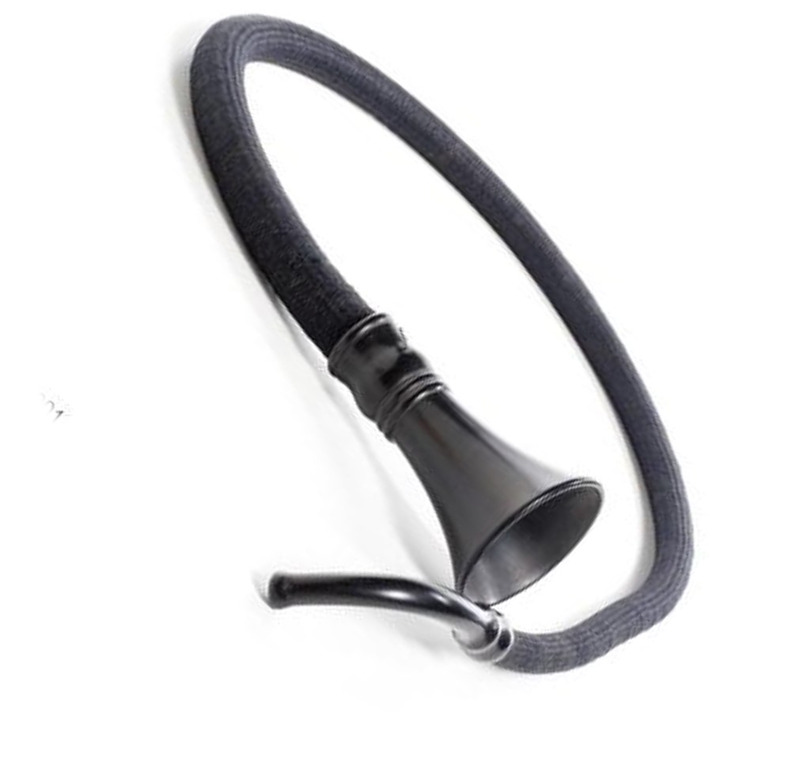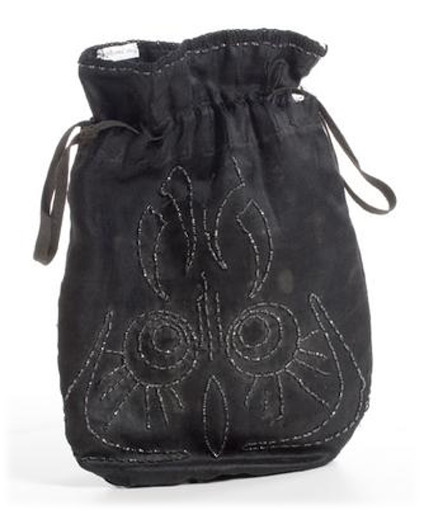Amelia Wood's Conversation Tube & Pouch
Item
-
Title
-
Amelia Wood's Conversation Tube & Pouch
-
Description
-
This black conversation tube, now part of the Ken Seiling Waterloo Region Museum Collections, has a metal earpiece on one end of a long cotton tube and a metal mouthpiece on the other end. The black drawstring pouch that was used to store the conversation tube is decorated with ornate hand-beading, also in black: eyes, a nose, and the outlines of a face and feathers come together to form an owl’s face.
-
JAIPREET VIRDI ON WHAT THIS OBJECT TEACHES US:
Dr. Virdi suggests that ear trumpets offer interesting case studies of the material history of disability by providing historical evidence of their users’ class and gender and of adaptations made in order to align medical devices with individual abilities.
Many nineteenth- and twentieth-century people with disabilities used bespoke prosthetic devices that accommodated their specific needs. Dr. Virdi explains that there were few manufacturers who produced ear trumpets with enough amplification to be useful to their deaf customers and that such trumpets were sold in various sizes and styles, and at different prices, in order to accommodate personal preferences and degrees of hearing loss. A conversation tube like this one was prone to significant wear and tear, especially where the cotton and metal meet, so users took special care of such devices.
This particular conversation tube belonged to Amelia Wood, a deaf woman who lived on her sister’s farm near Ottawa in the 1880s. Wood carried this conversation tube with her everywhere, even while working on the farm, and so she crafted a black drawstring pouch that could be attached to her dress or draped on her waist. Dr. Virdi explains that Wood’s pouch offers a useful example of a user's adaptation since Wood’s handmade pouch was one way of better aligning the medical device to her own body. Wood added the beaded decoration that adorns the front of the pouch by hand, likely as a way of expressing her own style, but the decoration also reflects her identity, including her relationship to her prosthesis. As Dr. Virdi explains, the pouch provided a way to secure Wood’s conversation tube to her body and offers evidence of Wood’s efforts to integrate her prosthesis with her body.
With this analysis in mind, Dr. Virdi urges us to consider objects such as Wood’s conversation tube not as symbols of exclusion or otherness but rather as offering insight into the identities and daily lives of disabled people—how they lived, how they worked, and how they navigated social spaces.



